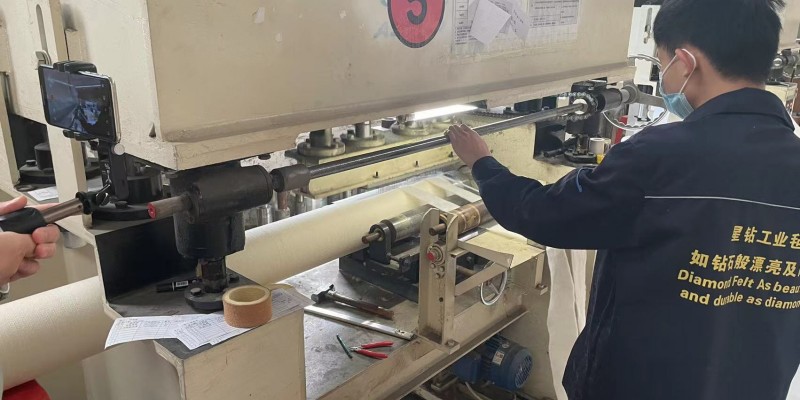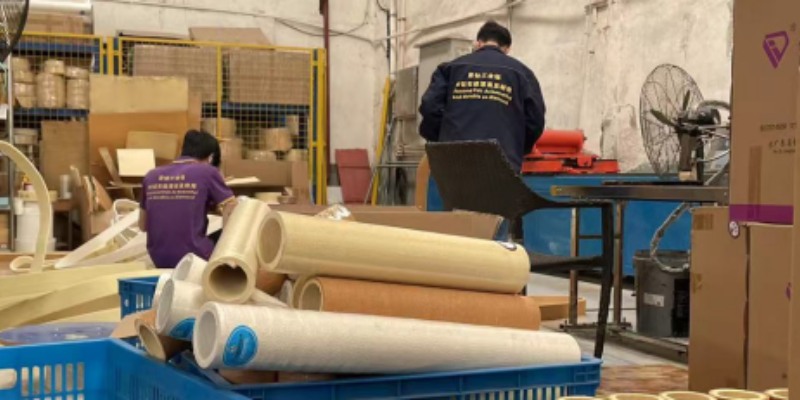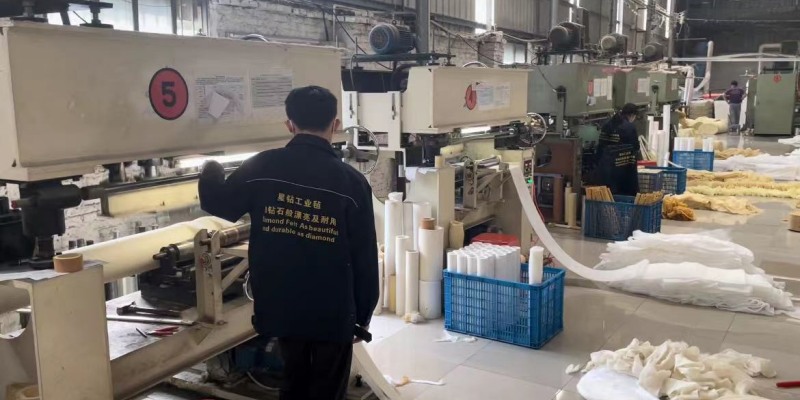An industrial roller iron is a device that uses high temperature and pressure to iron clothes.
It consists of one or more heated rollers and one or more conveyor belts.
It can iron a large amount of clothes quickly, efficiently, and evenly. , making clothes smooth, smooth, and soft, improving the quality and appearance of clothes.
Industrial roller irons are widely used in hotels, hospitals, laundry rooms, garment factories, and other industries.
They are energy-saving, environmentally friendly, and efficient ironing equipment.
However, using an industrial roller iron is not a simple matter.
It requires following certain operating specifications, paying attention to safety and maintenance, and mastering some usage skills to achieve its best ironing effect.
This article will introduce you to the methods and techniques of industrial roller irons to help you improve ironing efficiency and quality.
text
The industrial roller iron is a high-temperature and high-pressure equipment.
There may be some dangers and risks during use, such as burns, electric shock, fire, explosion, etc.
Therefore, when using the industrial roller iron, you must pay attention to the following safety matters:
Before using the industrial roller iron, you must check whether the power supply, water source, air source, oil source, etc.
Of the equipment is normal, whether all parts of the equipment are intact.
Whether there are flammable and explosive items around the equipment.
Whether the ventilation of the equipment is good, and whether the equipment is in good condition.
The ground is flat and dry.

When using an industrial roller iron, you must operate it according to the instruction manual of the equipment.
Do not adjust the temperature, pressure, speed, and other parameters of the equipment at will.
Do not open the cover, door panel, and other parts of the equipment while the equipment is running.
Do not put any items into the equipment during the process, do not leave the equipment while the equipment is running.
Do not touch the rollers, conveyor belts, and other parts of the equipment while the equipment is running.
After using an industrial roller iron, you must turn off the power supply, water source, air source, oil source, etc.
of the equipment, clean the residue on the rollers, conveyor belts, and other parts.
Clean the outer surface of the equipment, and place the equipment in a safe place, keep children or unrelated persons away from the device.
Start the equipment: Turn on the power supply, water source, air source, oil source, etc.
Of the equipment, set the temperature, pressure, speed, and other parameters of the equipment.
Wait for the drum of the equipment to reach the preset temperature, and observe whether each indicator light of the equipment is normal.
And confirm The device operates normally.
Place the clothes to be ironed flatly on the conveyor belt of the equipment.
Press the start button of the equipment to start the equipment.
Send the clothes into the drum of the equipment, iron them, and observe the ironing of the clothes. If necessary.
You can adjust the parameters of the equipment.
If not, you can continue to place the next piece of clothing and repeat the above steps until all the clothing is ironed.
After all the clothes have been ironed, press the stop button of the equipment to stop the equipment.
Turn off the power supply, water source, air source, oil source, etc. of the equipment.
Wait for the drum of the equipment to cool, and take out the drum of the equipment Check the ironing effect of the clothes inside.
If there is any dissatisfaction, you can iron it again. If there is no dissatisfaction, you can fold, organize, and package.
And do other subsequent processing of the clothes.
Different clothing materials and characteristics have different effects on the ironing effect.
Therefore, when using an industrial roller iron, you need to choose the appropriate temperature and speed according to different clothing. Generally speaking, here are some common clothing materials and properties and their corresponding temperature and speed recommendations:
Natural fibers such as cotton, linen, and wool.
These types of clothing are relatively soft, breathable, and hygroscopic, prone to wrinkles, deformation, and fading.
When using an industrial roller iron, it is recommended to choose low temperature (about 80℃) and low speed (about 10cm/min) for line ironing to maintain the original texture and color of the clothes.

Animal fibers such as woolen and wool: These types of clothing are thicker, warmer, and more durable, but they are also stiffer, rougher, and prone to pilling.
When using an industrial roller iron, it is recommended to choose medium temperature (about 100℃) and medium speed (about 15cm/min) for ironing to make the clothes smooth without losing elasticity.
Silk, down, and other chemical fibers: This type of clothing is smooth, light, and soft, but also fragile and easy to break.
When using an industrial roller iron, it is recommended to choose a high temperature (about 120℃) and high speed (about 20cm/min) for line ironing to make the clothes bright and not easy to deform.
In addition to basic temperature and speed adjustment, industrial roller irons also have some additional functions such as steam, spray, folding, etc.
These functions can be selected and used according to different needs and occasions to improve high-pressure ironing results.
Here are some common additional features and what they do:
Steam can increase the contact area between the clothing surface and the air.
Thereby speeding up the evaporation of water oil, and grease, making the clothes cleaner and brighter.
At the same time, steam can also make clothes softer and more comfortable.
When using the steam function, you need to control the water volume and time and avoid excessive steam causing water scale or damage.
Spray can spray water mist or other liquid (such as essence) on the parts that need to be folded or sorted.
Thereby increasing the effect of folding or sorting.
At the same time, the spray can also prevent clothes from wrinkling or deforming during folding or finishing.
When using the spray function, you need to pay attention to controlling the amount and direction of the spray and avoid excessive or excessive spray causing waste or pollution.
Folding refers to folding flat and wrinkle-free clothing according to certain rules and methods for easy storage and transportation.
When using the folding function.
You need to pay attention to choosing the appropriate folding method and number of times and avoid too much or too little.
Causing damage to the clothes or taking up space.
Although the industrial roller iron is efficient ironing equipment, if misused, some misunderstandings and problems will occur.
Which will affect the ironing effect and the life of the equipment.
Here are some common misunderstandings and problems and their corresponding solutions:
Overheating refers to adjusting the temperature of the industrial roller iron to too high, exceeding the heat resistance of the clothes.
Causing the clothes to shrink, burn, and become discolored or damaged.
The cause of overheating may be a faulty temperature controller, faulty temperature sensor, faulty thermometer, etc.
The solution is to check and repair the temperature control system promptly.
Choose the appropriate temperature according to the material and characteristics of the clothes, and do not blindly pursue high temperatures.
Overhumidity refers to adjusting the water volume of the industrial roller iron to be too large.
Exceeding the water absorption of the clothes, causing the clothes to be overly wet, sticky, wrinkled, or breed bacteria.
The cause of overhumidity may be a water volume controller failure, a water volume sensor failure, a water meter failure, etc.
The solution is to promptly check and repair the water volume control system.
Select the appropriate water volume according to the material and characteristics of the clothes, and do not blindly pursue moisture.
Over-pressure refers to adjusting the pressure of an industrial roller iron to be too high.
Exceeding the bearing capacity of the clothes, causing deformation, indentation, damage, or affecting the texture of the clothes.
The cause of overpressure may be pressure controller failure, pressure sensor failure, pressure gauge failure, etc.
The solution is to promptly check and repair the pressure control system, select the appropriate pressure according to the material and characteristics of the clothing, and not blindly pursue smoothness.

The industrial roller iron is a practical ironing equipment that can iron a large number of clothes quickly, efficiently, and evenly, improving the quality and appearance of the clothes.
However, when using an industrial roller iron, you also need to pay attention to some methods and techniques.
Follow certain operating specifications, pay attention to safety and maintenance, and master some usage skills to achieve the best ironing effect.
This article introduces you to the use methods and techniques of industrial roller irons.
I hope it will be helpful to you. If you have any other questions or needs, please feel free to let me know.
I hope they will be helpful to you. If you have any other questions, please feel free to communicate with me at any time.
If you have any questions, you can also watch our Facebook website:www.facebook.com/nomexfelt
As we know, Heat Transfer Printing Felt is suitable for fabrics, decorative fabrics, curtains, le...
Read Safety Rules for Laundry Management to be a qualified manager. PARTⅠ Laundry room Safety Gen...
The extrusion machine is the leading equipment for the production of aluminum profiles. The quali...
Heat transfer printing is a contemporary printing process in the clothing market. It prints the p...
In the textile industry, felt is only a small part but important. About how to choose felt that i...
Foshan Pure Technology Company., Ltd. helps conveyor belt manufacturers source equipment to metal...
Nomex, an intermediate aramid, also known as aramid 1313. It is characterized by good heat resist...
In the 1960s, the Dupont developed a kind of aramid composite material, it is Kevlar. It has very...